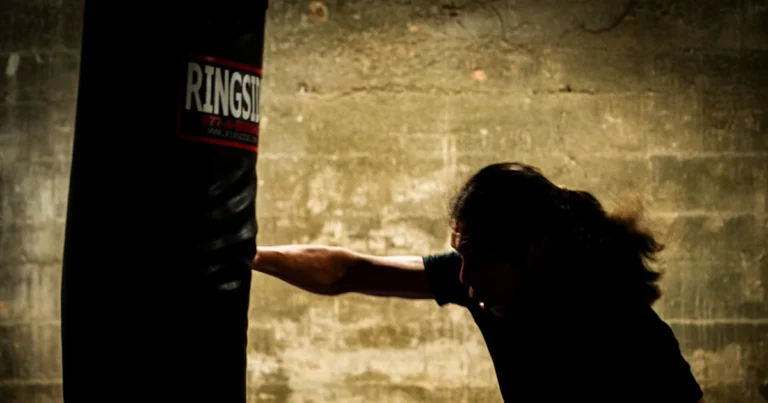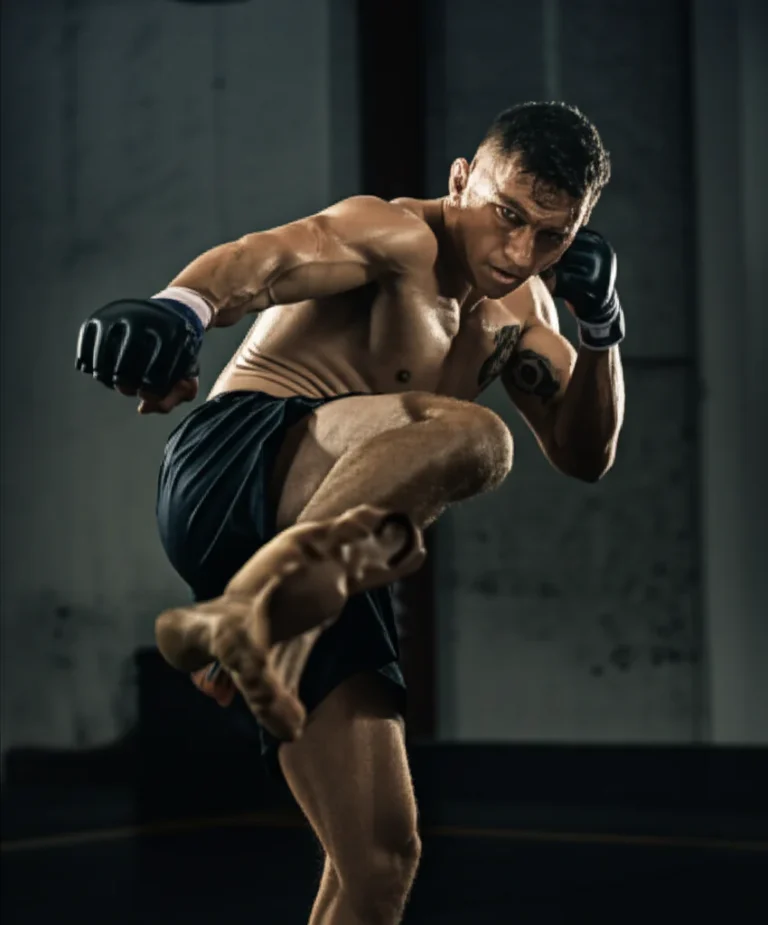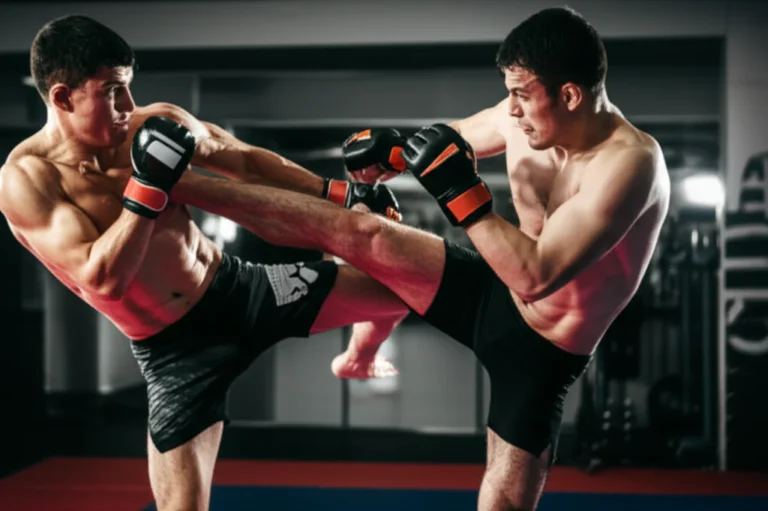Support our educational content for free when you purchase through links on our site. Learn more
What Is a Martial Artist Called? 20+ Titles You Didn’t Know 🥋 (2025)
Ever wondered what to call someone who throws punches, flips, or gracefully disarms opponents on the mat? Spoiler alert: “martial artist” is just the tip of the iceberg! From the mysterious Sensei in Japan to the fierce Nak Muay of Thailand, every martial art style comes with its own unique title—and some sound like they belong in a fantasy novel.
At MMA Ninja™, we’ve trained with legends and rookies alike, and we’ve uncovered over 20 distinct names martial artists go by around the world. Curious about what a Brazilian Jiu-Jitsu expert is called? Or how a Korean Taekwondo instructor’s title differs from a Western boxing coach? Stick around, because by the end of this guide, you’ll be fluent in the global language of martial arts titles—and maybe even ready to claim your own!
Key Takeaways
- “Martial artist” is the universal term, but each style has its own specific name like Karateka, Judoka, or Sifu.
- Titles reflect culture, skill level, and respect, ranging from beginner to master ranks such as Sensei, Shihan, and Hanshi.
- Understanding these titles deepens your appreciation of martial arts’ rich history and philosophy.
- Whether you’re starting out or leveling up, knowing the lingo helps you connect with your martial arts community.
Ready to gear up and start training? Check out top-rated essentials like Sanabul MMA Gloves and Fuji BJJ Gis to kickstart your journey!
Table of Contents
- ⚡️ Quick Tips and Facts
- 🥋 The Origins: History of Martial Artists and Their Titles
- 🤔 What is a Martial Artist Called? The Definitive Answer
- 🌏 Martial Artist Titles Around the World
- 🧑🎓 20+ Types of Martial Artists (And What They’re Called)
- Karateka (Karate Practitioner)
- Judoka (Judo Practitioner)
- Taekwondoin (Taekwondo Practitioner)
- Kung Fu Artist (Kung Fu Practitioner)
- Boxer (Boxing Practitioner)
- Kickboxer (Kickboxing Practitioner)
- Muay Thai Nak Muay (Muay Thai Practitioner)
- Judoka (Judo Practitioner)
- Aikidoka (Aikido Practitioner)
- Jiu-Jiteiro (Brazilian Jiu-Jitsu Practitioner)
- Wrestler (Wrestling Practitioner)
- Samboist (Sambo Practitioner)
- Capoeirista (Capoeira Practitioner)
- Kendo-ka (Kendo Practitioner)
- Sumotori (Sumo Wrestler)
- Savateur (Savate Practitioner)
- Pencak Silat Pesilat (Silat Practitioner)
- Eskrima/Arnis/Kali Eskrimador (Filipino Martial Arts Practitioner)
- Mixed Martial Artist (MMA Fighter)
- Other Unique Martial Artist Titles
- 🏆 What Makes a Martial Artist? Skills, Qualities, and Mindset
- 👑 What is a Martial Arts Master Called? Honorifics and Hierarchies
- 🧘 Martial Arts, Philosophy, and the Way of Life
- 📝 How to Become a Martial Artist: Steps, Tips, and Resources
- 💡 Fun Facts and Lesser-Known Trivia About Martial Artists
- 🛡️ Common Misconceptions About Martial Artists
- ✅ Key Takeaways: What You Need to Remember
- 🔗 Recommended Links
- ❓ FAQ: Martial Artist Names and Titles
- 📚 Reference Links
- 🏁 Conclusion
⚡️ Quick Tips and Facts
- “Martial artist” is the umbrella term, but the real fun starts when you zoom in—each style has its own badge of honor.
- Karateka, Judoka, Nak Muay, Capoeirista—ever wondered why they sound like Pokémon evolutions? Stick around, we’ll decode them all.
- Sensei ≠ Master. A sensei is simply “one who came before”; a master (Shihan, Sifu, Kwanjangnim) has clocked decades and still bows to the white-belt kid.
- Pro-tip: If you walk into a gym and everyone’s called “coach,” you’re probably in a Western MMA gym. If you hear “Sifu,” bow and empty your cup of ego—Kung Fu etiquette 101.
- Women warriors? Yep—Valentina Shevchenko is a Nak Muay and a Taekwondoin. Titles don’t care about gender.
🥋 The Origins: History of Martial Artists and Their Titles
Long before hashtags, martial artists were named after their battlefield roles. The Chinese character 武 (wǔ)—meaning “martial”—first appeared on Shang-dynasty tortoise shells (1200 BCE). Warriors were called “士 (shì)”, a term that later evolved into “Samurai” in Japan.
Fast-forward to 1882: Jigoro Kano coins the title “Sensei” for Judo instructors at the Kodokan. Meanwhile, Okinawan masters preferred “Tōdi” (唐手, “China hand”) before the term Karate (空手, “empty hand”) was popularized in 1936.
Fun twist: The word “martial” itself comes from Mars, the Roman god of war. So technically, every time you bow onto the mat, you’re saluting an ancient deity. 🪐
🤔 What is a Martial Artist Called? The Definitive Answer
A martial artist is anyone who systematically trains in a codified combat system—be it for sport, self-defense, or spiritual growth. But the label shifts like a stance switch:
| Context | Term | Example |
|---|---|---|
| General | Martial artist | “She’s a dedicated martial artist.” |
| Japanese arts | Budoka (武道家) | A Karateka is a type of Budoka. |
| Chinese arts | Wushu-jia (武术家) | Jet Li is a globally known Wushu-jia. |
| Korean arts | Mu-in (무인) | A Taekwondoin is a Mu-in. |
| Western arts | Fighter, Athlete | “He’s a pro MMA fighter.” |
Bottom line: Use martial artist when you’re unsure; use the style-specific term when you want to flex your lexicon.
🌏 Martial Artist Titles Around the World
Japanese Martial Arts: Sensei, Shihan, and More
- Sensei (先生): Literally “born before.” Not exclusive to martial arts—your high-school biology teacher is also a sensei.
- Shihan (師範): Master instructor; usually 5th dan or higher.
- Hanshi (範士): “Exemplary master”; 8th dan+ in many systems.
- Kyōshi (教士): Senior teacher; often 6th–7th dan.
Anecdote: Our BJJ coach once introduced himself as “just Rick.” Turned out he’s a 5th-degree black belt under Renzo Gracie. Humility > hierarchy.
Chinese Martial Arts: Sifu, Shifu, and Their Meanings
- Sifu (師父): “Teacher-father.” In Cantonese, pronounced see-foo.
- Shifu (师父): Mandarin pronunciation; same characters, different accent.
- Sigung (師公): Your teacher’s teacher—grandmaster level.
Pro-tip: Never call your Sifu “dude.” Unless you enjoy push-ups on your knuckles.
Korean Martial Arts: Sabumnim, Kwanjangnim, and Beyond
- Sabumnim (사범님): Instructor; literally “teaching model.”
- Kwanjangnim (관장님): School owner or headmaster.
- Sunbae (선배): Senior student; not a teacher, but still deserves a bow.
Western Martial Arts: Coach, Instructor, and Master
- Coach: Common in MMA gyms and boxing clubs.
- Professor: BJJ black belt instructors often adopt this title (thanks, Brazilian Portuguese).
- Maestro: Used in Olympic fencing and historical European martial arts (HEMA).
🧑🎓 20+ Types of Martial Artists (And What They’re Called)
- Karateka – Karate practitioner.
- Judoka – Judo practitioner.
- Taekwondoin – Taekwondo practitioner.
- Kung Fu Artist – Generic, but “Wushu-jia” is precise.
- Boxer – Western boxing.
- Kickboxer – Dutch-style, K-1, or American rules.
- Nak Muay – Muay Thai fighter.
- Aikidoka – Aikido practitioner.
- Jiu-Jiteiro – Brazilian Jiu-Jitsu practitioner (Portuguese slang).
- Wrestler – Freestyle, Greco-Roman, folkstyle.
- Samboist – Sambo practitioner (Russia).
- Capoeirista – Capoeira dancer-fighter.
- Kendo-ka – Kendo practitioner.
- Sumotori – Sumo wrestler.
- Savateur – Savate (French kickboxing).
- Pesilat – Pencak Silat (Indonesia).
- Eskrimador – Eskrima/Arnis/Kali (Philippines).
- Mixed Martial Artist – MMA fighter.
- Kalaripayattuka – Kalaripayattu (India).
- Systema Practitioner – Russian system of no-nonsense self-defense.
Bonus: A Luta Livre fighter is called a Lutador. Because Portuguese makes everything sound cooler.
🏆 What Makes a Martial Artist? Skills, Qualities, and Mindset
| Skill | Why It Matters | Real-World Example |
|---|---|---|
| Timing | Land a jab when they blink | Anderson Silva’s front-kick KO vs. Vitor Belfort |
| Humility | Keeps you learning | Coach Firas Zahabi still takes beginner classes |
| Conditioning | Muscles lie, lungs don’t | Navy SEALs adopt Muay Thai roadwork for a reason |
| Adaptability | Styles make fights | See MMA History—from Royce’s gi to Ngannou’s sprawl |
👑 What is a Martial Arts Master Called? Honorifics and Hierarchies
Short answer: It depends on the zip code of the art.
| Art | Master Title | Belt/Degree | Fun Fact |
|---|---|---|---|
| Karate | Shihan / Hanshi | 5th–10th dan | Funakoshi never awarded belts; the system came later. |
| BJJ | Professor / Coral belt | 7th dan+ | Red-and-white coral belt looks like Neapolitan ice cream. |
| Kung Fu | Sigung / Shifu | No belts; sashes mark progress | Sigung Ip Man taught Bruce Lee in a Hong Kong rooftop. |
| Taekwondo | Kwanjangnim | 4th dan+ | Korean masters love gold-trimmed doboks. |
| Boxing | Coach / Trainer | No belts; record speaks | Teddy Atlas trained Mike Tyson—no fancy title needed. |
Philosophical Fighter’s take: “Good leadership begins with humility. Whatever your title, stay humble and stay hungry.” We second that—ego taps out to wisdom every time.
🧘 Martial Arts, Philosophy, and the Way of Life
Martial arts aren’t just about roundhouse kicks; they’re a moving meditation. The Japanese concept of Budo (武道) translates to “the way of stopping conflict”—not starting it.
Bruce Lee once said, “Be water, my friend.” That’s not a hydration tip—it’s a Mixed Martial Arts Philosophy lesson in adaptability.
Personal story: Coach Mel started Muay Thai after a brutal breakup. The heavy bag became her therapist. Today she’s a Nak Muay with a 5-0 amateur record and a heart that no longer leaks.
📝 How to Become a Martial Artist: Steps, Tips, and Resources
-
Pick Your Poison
- Want striking? Try Muay Thai gloves on Amazon | Walmart | Fairtex Official.
- Grappling? Grab a Fuji BJJ gi | Brand Official.
-
Find a Legit Gym
- Google Maps + reviews. Red flags: contracts longer than a mortgage.
- Drop in for a free class. If they charge you for water, run.
-
Gear Up (Without Going Broke)
- 👉 CHECK PRICE on:
- Sanabul Essential Glove: Amazon | eBay | Sanabul Official
- Hawk Sports Shin Guards: Amazon | Walmart
- 👉 CHECK PRICE on:
-
Consistency > Talent
- 3x a week beats 1x a week “but I’m so motivated.”
-
Compete or Don’t—Your Call
- First tournament? Bring a friend, a banana, and a sense of humor.
💡 Fun Facts and Lesser-Known Trivia About Martial Artists
- Capoeira was disguised as dance to fool colonial slave masters—talk about hiding in plain sight.
- Sumo wrestlers eat up to 7,000 calories a day. Their title “Rikishi” literally means “powerful gentleman.”
- Kendo practitioners shout “Kiai” not to scare you, but to expel evil spirits. (Also, it’s fun.)
- Eskrima sticks were originally rattan farm tools—farmers by day, warriors by night.
🛡️ Common Misconceptions About Martial Artists
| Misconception | Reality Check |
|---|---|
| “All black belts are masters.” | A BJJ blue belt can tap a 5th dan Karate black belt on the ground. |
| “Martial artists are violent.” | Most preach de-escalation; the best fight is the one you avoid. |
| “Women can’t fight.” | Tell that to Amanda Nunes. |
| “You need to be young.” | Started at 40? You’ll still be a martial artist at 80. |
✅ Key Takeaways: What You Need to Remember
- Martial artist is the universal label; style-specific names add flavor.
- Titles (Sensei, Sifu, Coach) reflect culture, not superiority.
- Gear matters, but grit matters more.
- Start today—the best time to plant a punch was 20 years ago; the second-best is now.
🔗 Recommended Links
- What is mixed martial arts called?
- Fighter Profiles
- MMA History
- Mixed Martial Arts Philosophy
- MMA Industry News
- MMA Coaching
❓ FAQ: Martial Artist Names and Titles
Q: Can I call myself a martial artist after one class?
A: You can, but we’d say you’re a student until the habit sticks.
Q: Is “ninja” a real title?
A: Historically, Shinobi were spies, not martial artists. Modern “ninja gyms” are more cosplay than combat.
Q: Do I need to bow in every style?
A: Japanese and Korean arts—yes. Boxing gym—fist bump is fine. Context is king.
📚 Reference Links
🏁 Conclusion
So, what is a martial artist called? The short answer is: a martial artist—but that’s just the tip of the iceberg. Dive deeper, and you’ll find a rich tapestry of titles that reflect history, culture, skill level, and respect. From the humble Karateka to the revered Sifu, each name carries a story, a lineage, and a philosophy.
At MMA Ninja™, we’ve seen firsthand how these titles shape identity and community. But remember: titles don’t make the master—dedication, humility, and continuous learning do. Whether you’re a white-belt beginner or a seasoned Shihan, the journey is what counts.
If you’re ready to start your own path, pick a style that resonates, find a reputable gym, and commit to the grind. And if you ever feel overwhelmed by the jargon, just call yourself a martial artist—that’s the one title that unites us all.
🔗 Recommended Links
Gear up and get started with these essentials:
-
Sanabul Essential MMA Gloves:
Amazon | eBay | Sanabul Official Website -
Fuji BJJ Gi:
Amazon | Fuji Sports Official Website
Books to deepen your martial arts knowledge:
- The Art of War by Sun Tzu — Amazon
- Tao of Jeet Kune Do by Bruce Lee — Amazon
- The Book of Five Rings by Miyamoto Musashi — Amazon
❓ FAQ: Martial Artist Names and Titles
What are the different levels of martial arts belts and their significance?
Belt systems vary widely between martial arts, but generally, belts represent progress, skill, and responsibility. For example:
- White belt: Beginner; a clean slate.
- Colored belts (yellow, green, blue, purple, brown): Intermediate stages showing increasing proficiency.
- Black belt: Expert level; often subdivided into degrees (dan ranks).
- Coral and red belts: Reserved for masters and grandmasters in arts like Brazilian Jiu-Jitsu and Karate.
Why it matters: Belts motivate students and provide a structured path. But beware of “McDojo” belts—real mastery takes years, not shortcuts.
How do I choose the right martial art style for myself as a beginner?
Ask yourself:
- What’s your goal? Fitness, self-defense, competition, or cultural interest?
- Do you prefer striking, grappling, or a mix?
- What’s your physical condition and age?
Tips:
- Visit local gyms and try trial classes.
- Read up on styles—Gymdesk’s guide is a great start.
- Don’t be afraid to switch if it doesn’t fit.
Remember: The best martial art is the one you enjoy enough to keep training.
What are the most effective martial arts for self-defense and why?
Top contenders:
- Krav Maga: Designed for real-world scenarios with no-nonsense techniques.
- Brazilian Jiu-Jitsu: Grappling and ground control to neutralize threats.
- Muay Thai: Powerful striking with fists, elbows, knees, and shins.
- Jeet Kune Do: Bruce Lee’s philosophy of efficiency and adaptability.
Why? These arts emphasize practical techniques, situational awareness, and quick decision-making. But remember, self-defense also involves mindset and avoidance.
Read more about “🥊 MMA vs Boxing: 11 Brutal Truths (2025)”
Can anyone become a professional martial artist, and what does it take to compete?
Yes, but it requires:
- Dedication: Years of rigorous training and lifestyle commitment.
- Physical and mental toughness: Injuries, setbacks, and pressure are part of the game.
- Support system: Coaches, training partners, nutritionists, and sometimes sponsors.
- Competition experience: Start local, then regional, national, and international.
Pro tip: Many pros started as hobbyists. Passion and persistence open doors.








